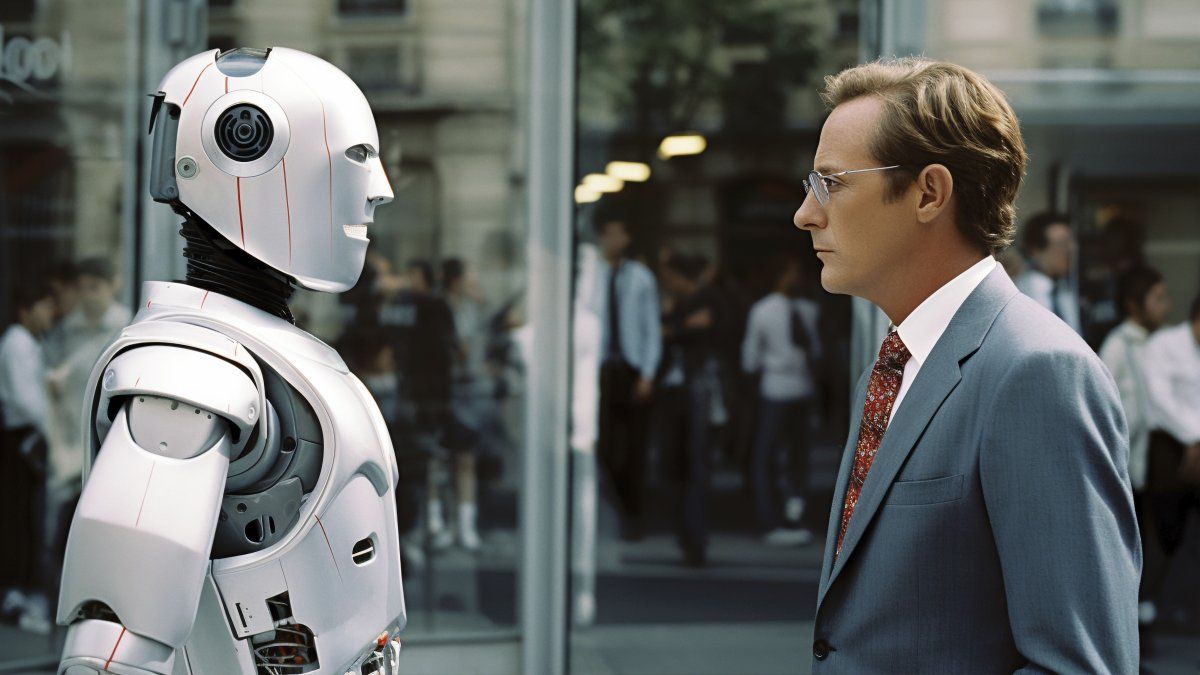In recent months, mass layoffs in companies such as Microsoft, IBM, Dell, Meta, Salesforce, PWC, UPS and Morgan Stanley They have highlighted an inescapable reality: lA automation and artificial intelligence are redefining work as we knew it.
When Microsoft announced the exit of 6,000 employees – 3 % of its workforce – to “reduce management layers” in Windows and Officemany interpreted it as a tactical adjustment. However, by adding it to the 9,000 positions suppressed by IBM In the United States, the 12,500 cuts in the sales division of Dellthe 3,600 layoffs of Goal or the 12,000 management positions eliminated by UPSit is clear that it is not isolated events, but a pattern consisting of companies that embrace AI to optimize processes and reduce operating costs.
This wave of cuts not only affects engineers or software developers, but also administrative and support roles: counters, assistants, logistics operators and intermediate controls see how their traditional tasks are absorbed by planning algorithms, data analysis systems and automation platforms from end to end. In the case of Salesforcefor example, the company sacrificed 1,000 positions – almost 1.5 % of its global force – at the same time that it opened 2,000 vacancies for AI experts, a movement that illustrates the paradox of a market that, while expelling labor, demands increasingly specialized skills.
To understand the global dimension of this change it is essential to look at the “Future of Jobs 2025” report of the World Economic Forum. There it is estimated that, by 2030, they will coexist the destruction of 92 million jobs and the creation of 170 million new positionsderiving in a structural churn of approximately the 22 % of the 1 200 million formal jobs analyzed, and a net increase of 78 million works. This means that, in an environment of 100 jobs, 22 will change their occupation or sector driven by technology, while the remaining 78 will retain their current functions.
That vibrant dynamic reveals winners and losers of this transition. On the one hand, areas such as data science, cybersecurity, the development of AI applications, renewable energies and technological finance grow strongly; on the other, administrative trades, routine tasks in traditional logistics, and door -to -door sales are in retreat. Wef’s conclusion is overwhelming: of every 100 workers, 59 will need an additional training before 2030 to stay relevant.
The challenge for those who lose their jobs is not less. Some only find new opportunities in manual trades or in the informal economy – distribution services, work platforms on request – where flexibility coexists with precariousness. Others, with access to Upskilling programs, manage to relocate in technological or analysis areas. The report indicates that, of those who require training, 29 can be trained in their current position, 19 will travel to different functions within the same organizationbut 11 will be at risk Due to lack of adequate conversion programs.
This reality is particularly gravity for new university graduates. While the faculties continue to produce engineers, economists, lawyers and administrators, the real demand of the market moves towards hybrid profiles that combine technical knowledge with socio -emotional competencies such as adaptability or management of agile projects. In many cases, graduates face the paradox of a outdated educational offer with respect to the rhythm of business innovation, which favors the appearance of employability gaps and the chain of temporary contracts or practices without a clear horizon.
Faced with this scenario, the alliance between universities and companies becomes imperative. Incorporating into the matters such as programming, ethics of AI, analysis of soft data and skills is no longer a recommendation: it is a requirement for graduates not to reach the labor market with a title whose practical relevance has faded. In addition, the Dual Training Model, where the student alternates theoretical classes with practices in corporate environments, could shorten the gap between what was learned and demanded by organizations.
From the perspective of public policies, governments have fundamental levers in their hands: encourage continuous training through fiscal bonuses, subsidies for sectoral reconversion and social protection networks that mitigate the impact of the transition. Without measures that ensure equitable access to training and an economic mattress for those who are outside the formal market, the adoption of AI runs the risk of exacerbating inequality and generating unprecedented social fragmentation.
From my perspective, the adoption of AI cannot be limited to technological deployment; It must be conceived as a change management project that preserves internal cohesion and value human capital. Design custom Upskilling plans, anticipate the needs of new profiles and establish alternative career routes are essential steps to convert disruption into a sustainable competitive advantage.
Automation and AI have become inevitable a question that puts our social contract to the test: how do we accompany those who lose traditional jobs without neglecting operational excellence and innovation? If we manage to design continuous learning systems and inclusive labor policies, the same technology that displaces tasks can boost a more dynamic, creative and resilient market; Otherwise, the projected Churn of 22 % could translate into a structural unemployment and precariousness wave. In that delicate balance, the true challenge of our time lies: make technological progress pay fruits for all.
CEO of Varegos and university professor.
Source: Ambito
David William is a talented author who has made a name for himself in the world of writing. He is a professional author who writes on a wide range of topics, from general interest to opinion news. David is currently working as a writer at 24 hours worlds where he brings his unique perspective and in-depth research to his articles, making them both informative and engaging.




